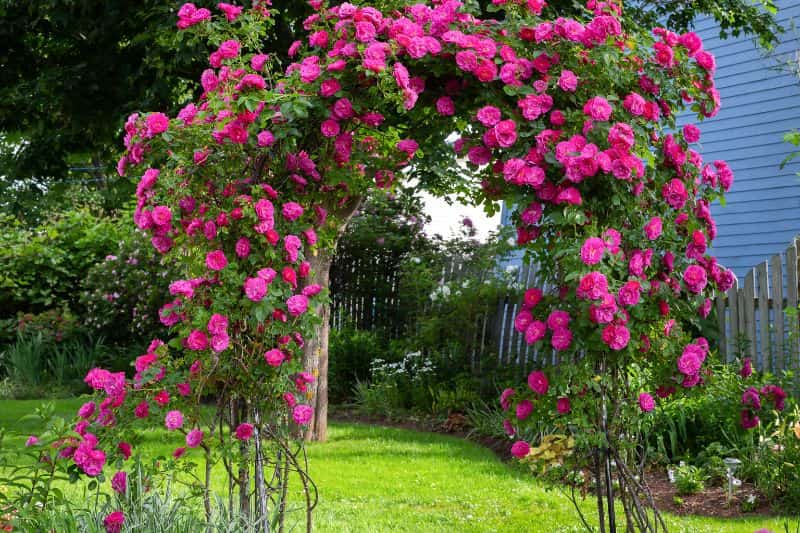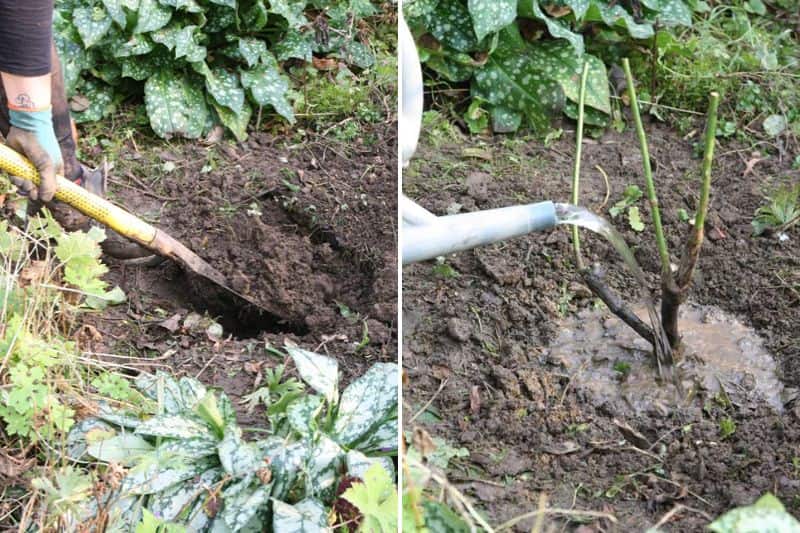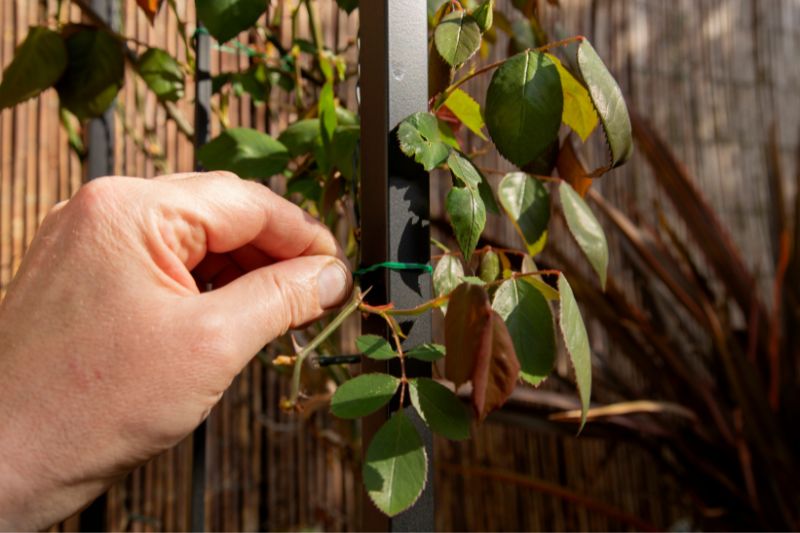What could be more romantic than a flowered arch covered in roses in a garden? Used to mark entrance to a garden or a passage, or to punctuate an avenue, flowering arches bring verticality, some shade and a magnificent cascade of roses. Discover how to train a climbing rose on an arch.

Where to place an arch?
You can plant a climbing rose on an arch:
- in sun or partial shade, depending on climbing rose's needs
- at entrance to a garden or part of garden, as a "gate" and a flowering opening
- to punctuate an avenue or a pathway. You can also install several arches to create an even more spectacular effect
- against a wall or wire fence.
Under arch, you can also place a bench or a small table to enjoy display of flowers and some coolness in summer.
When to plant a climbing rose on an arch?
It depends on form in which you bought climbing rose.
- For a rose with bare roots, you can plant from November to March;
- For a potted rose, it is possible to plant all year round.
In any case, avoid planting during periods of frost or extreme heat.
Equipment needed
- an arch
- thick gloves to protect against thorns or even long gloves to cover forearms
- soft ties or raffia
- a pruning shear to cut dead branches
- fertiliser for roses
Installing the arch
- There are different types of arches made of wood or metal. Choose a sturdy arch, for example stainless steel, so that structure properly supports weight of climbing rose and does not sag later.
- Install arch by driving posts deep enough into the soil. You can consolidate installation by pouring a little concrete to firmly anchor each foot. We recommend this if garden is in a windy area.
Planting the climbing rose
- Chosen rose should be climbing, 2 to 3 metres tall at maturity, with flexible stems and few thorns, even thornless, so it can be handled easily and without injury.
- Plant rose about 30 cm outside arch. Place a rose on each side of arch. They will meet at the top. You can choose same variety or two different varieties to create an original pairing
To go further on this point, discover our advice on planting roses in pots or with bare roots.

Training the climbing rose on the arch
- Before training rose, remove dead or damaged branches by cutting them back to their base.
- To climb, the rose needs to be tied to the support. Use for this soft ties and take care not to break or damage stems when you bend them. Wire should be avoided to prevent damaging stems.
- Tilt the rose's branches and tie the main structural branches along the support. Do not tighten ties too much so the branch can continue to thicken. Place ties spaced 30 to 40 cm apart.
- You can train branches in a fan shape (stems spread progressively from base to top), if you have a double arch, or in a spiral around the support. Branches trained horizontally slow circulation of the sap and encourage flowering distributed along whole length of the stem. On a branch trained vertically, sap rises to the top and flowering is concentrated at the top only.
Discover how to tie a climbing rose. - Add manure or fertiliser at base of roses and water.

What's next?
During rose's growth, continue training. Once rose has reached top of arch, you can gently arch branches and tie them horizontally, which will slow sap movement and favour formation of flower buds, as explained above.
For maintenance, check training from time to time and tie new secondary branches, which will bear the flowers, to the support.
Re-train your rose when you prune it: for perpetual roses, this will be at end of winter, between February and April, and for non-perpetual roses, in July or August.
Discover our advice on pruning a climbing rose.































![[plantes_grimpantes nom="Rosier" variété="Climbing Rose" support="arche"] [plantes_grimpantes type="rosier" support="arche"]](https://en.promessedefleurs.eu/blogwp/wp-content/uploads/2022/12/comment-faire-grimper-un-rosier-sur-une-arche.jpg)
Comments